Table Settings of the Arts & Crafts Era
Hosting a dinner party or holiday gathering allows an Arts & Crafts enthusiast to use his or her collection: candlesticks, china, and linens come off the shelves and out of drawers.
Whether your collection is 100% antique or includes reproductions and new work, it’s surprisingly easy to set a table that looks authentic to the period. That’s because the way we dine today began in this era. The Arts & Crafts aesthetic rejected ornate excess and embraced straightforward ways to present a meal, without a fleet of servants.
Covering the table For formal occasions, a white damask tablecloth is still appropriate, but lace and intricate cutout patterns were passe. Period drawings by Voysey and Stickley show crossing linen table runners; each place was set on linen, yet the table’s wood grain was revealed. All things handcrafted and “quaint” were honored, so homespun linen with simple, bold embroidery or stenciling became standard. Embroidering or stenciling your own linens is in the Arts & Crafts spirit.
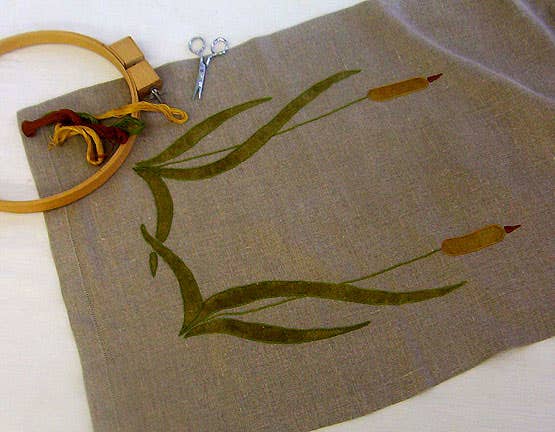
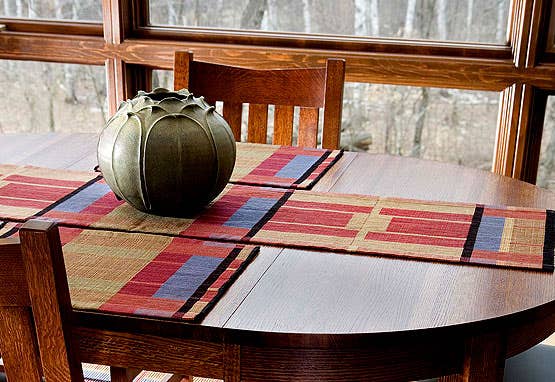
The centerpiece By now, homeowners had dismissed the overwrought and over-burdened epergnes of Victorian times. A simple pottery or clear-glass vase filled with seasonal flowers was preferable as a centerpiece. Lillie Hamilton French wrote in her 1903 book Homes and their Decoration: “I have a certain enthusiasm for a woman who prefers to supply her country-house table with flowers from her own garden: who will use sweet-peas in their season, asters in the fall, or the common ground-pine when her garden has succumbed to autumn frosts.” The Japanese view of nature was also respected in the A&C era, so you could try your hand at an Ikebana-style arrangement using a low pottery bowl from the period, say, a single iris stalk and fern held in a bowl by a ceramic or wire flower frog.
Lighting Electric light did away with the need for multi-jet gasoliers, but simple candlesticks were still considered essential for evening dining. Stickley wrote about the proper height for hanging an “electrolier,” commenting that if hung too high it glares into diners’ eyes, too low and there is no room for flowers and candlesticks. Remember that light bulbs were much dimmer at the beginning of the 20 century, so reduce your wattage. I’ve bought several pairs of vintage candlesticks in silver, brass, and bronze, which have the style but not the price tag of signed Jarvie, Tiffany, and Roycroft pieces.
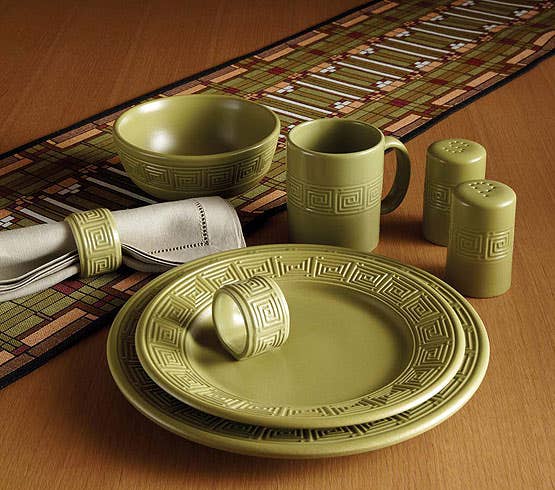
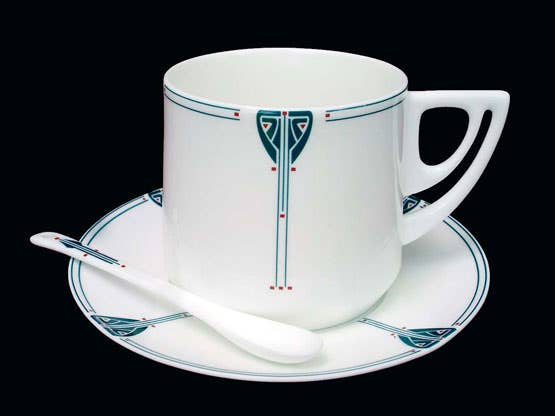
Dinnerware It is rare for anyone to own a complete set of Arts & Crafts china. Today’s collectors may locate individual plates by Dedham, Saturday Evening Girls, or Buffalo Pottery, but few people have service for twelve. A collecting option is to search out individual pieces of hand-painted china. This was a huge craze for housewife hobbyists, who studied patterns in magazines such as Keramic Studio and painted imported china blanks. These plates have only recently become valued for their Arts & Crafts and Art Nouveau motifs.
HINT The all-Arts & Crafts table was rare. Then as now, families mixed in heirloom pieces and contemporary favorites. Many Art Deco and Modern designs are a nice complement to Arts & Crafts items.
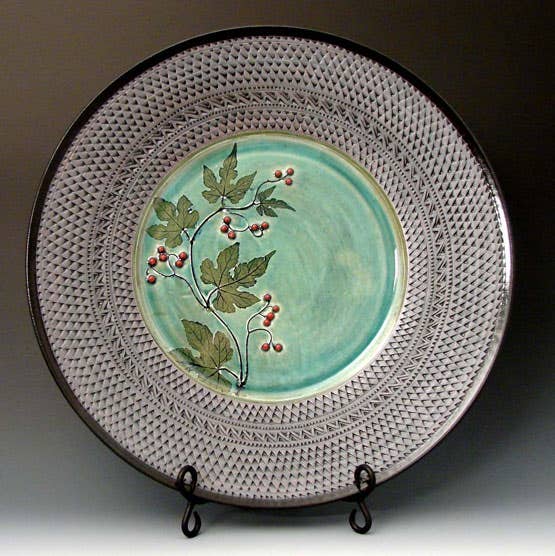
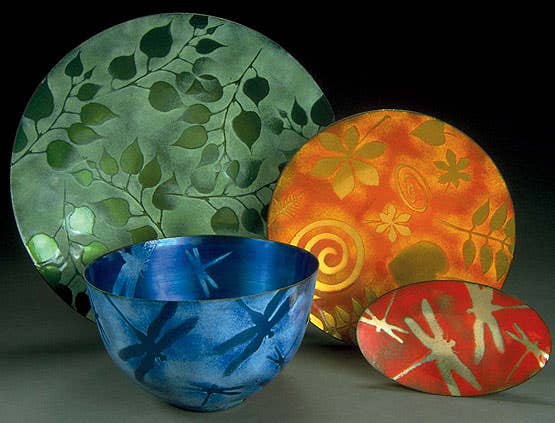
Glassware Not much information exists on preferred manufacturers, and surviving sets of fragile glassware are rare. Simple, hand-blown glass is widely available, so there should be no guilt in buying new. Avoid cut glass, patterned glass, colored glass, and intricate etching.
Formal serving pieces Metalwork was an important element of the Arts & Crafts movement. Connoisseurs seek out fine, hand-wrought silver by the great silversmiths of the era: Arthur Stone, Kalo, Randahl, Georg Jensen. But handmade sterling is a major investment. Hand-hammered copper bowls and chargers were also finely crafted by Karl Kipp, Jarvie, the Roycrofters, and Stickley, but they are also rare and expensive.
Purists may sniff, but antique silverplate is an affordable option that is greatly overlooked in antiques shops. Rigorously avoid fancy scrollwork, fake hammering, and any piece that shows wear, but consider trays, bowls, and pitchers that will add an essential reflective element to a formal table. Colonial Revival forms, such as a Paul Revere-style pitcher, are period-appropriate.
HINT Compatible collectible dinnerware includes that by Russel Wright; Bennington Pottery (Vermont); Raymor by Roseville; Rowantree Pottery (Maine).
Flatware Old Newbury Crafters continues to make hand-wrought flatware services in classic Arts & Crafts-era patterns, such as ‘Karen’. Georg Jensen designs are also coveted and are still being made. An inexpensive alternative is, once again, silverplate. I recently stumbled upon a silverplate service for eight in the 1948 pattern ‘Morningstar’ by Community Silver. People ask if it is Jensen. Develop your eye and remember that it is probably more suitable to move forward in flatware design history than backward—no curlicues!
Arts & Crafts Table Textiles
annwallace.com • Fabrics, embroidered and stenciled designs, and kits in Prairie and Craftsman styles.
archiveeditiontextiles.com • Runners, table toppers, and tablecloths made up in the company’s period-design fabrics.
kellymarshall.com • Hand-woven table runners and placemats derived from Arts & Crafts forms and palettes, from Kelly Marshall Custom Woven Interiors.
textilestudio.com • Arts & Crafts Period Textiles from the Studio of Dianne Ayres.
Period Dinnerware
daltons.com • Source for reproduction ‘Tudor Rose’ china originally produced by Onondaga Pottery in Syracuse, N.Y.
dardhunter.com • China incorporating motifs of Roycroft designer Dard Hunter.
idalindseychina.com • Fine new china in Art Nouveau and Art Deco styles reproduced for Ida Lindsey’s grand-daughter.
roycroftinn.com • The Roycroft Inn shop sells china designed for the Inn (original and adapted patterns).
shopwright.org • China patterns reproduced or derived from the architect’s designs, created for the Frank Lloyd Wright Preservation Trust.
eshop.villeroy-boch.com/us • Orientalist ‘Samarkand’ is on the elegant side for formal A&C dining rooms.
Contemporary Dinnerware
artsandcraftspotteryandtiles.com • A&C-inspired, hand-painted pottery, dinnerware, serving pieces, and tiles with nature motifs and geometric designs, by artist Suzanne Crane.
mackintoshenamels.com • Hand-crafted copper enamelware in vivid colors,, with motifs inspired by nature and the A&C movement.
Other Websites
asyoulikeitsilvershop.com • Thousands of patterns from hundreds of manufacturers; search by pattern or maker.
fairoak.com • Selling Dard Hunter and FLW china, hammered Reed & Barton flatware, pottery, and other dining accessories.
georgjensenstore.com • Danish company still producing Jensen’s original flatware designs.
neuegalerie.org • Wiener Werkstatte reproduction porcelain, silverware, glassware.
silvercrafters.com • Old Newbury Crafters, makers of hand-wrought sterling flatware.
Arts & Crafts Homes and the Revival covers both the original movement and the ongoing revival, providing insight for restoration, kitchen renovation, updates, and new construction. Find sources for kitchen and bath, carpet, fine furniture and pottery, millwork, roofing, doors and windows, flooring, hardware and lighting. The Annual Resource Guide, with enhanced editorial chapters and beautiful photography, helps Arts & Crafts aficionados find the artisans and products to help them build, renovate, and decorate their bungalow, Craftsman, Prairie, Tudor Revival, or Arts & Crafts Revival home.








